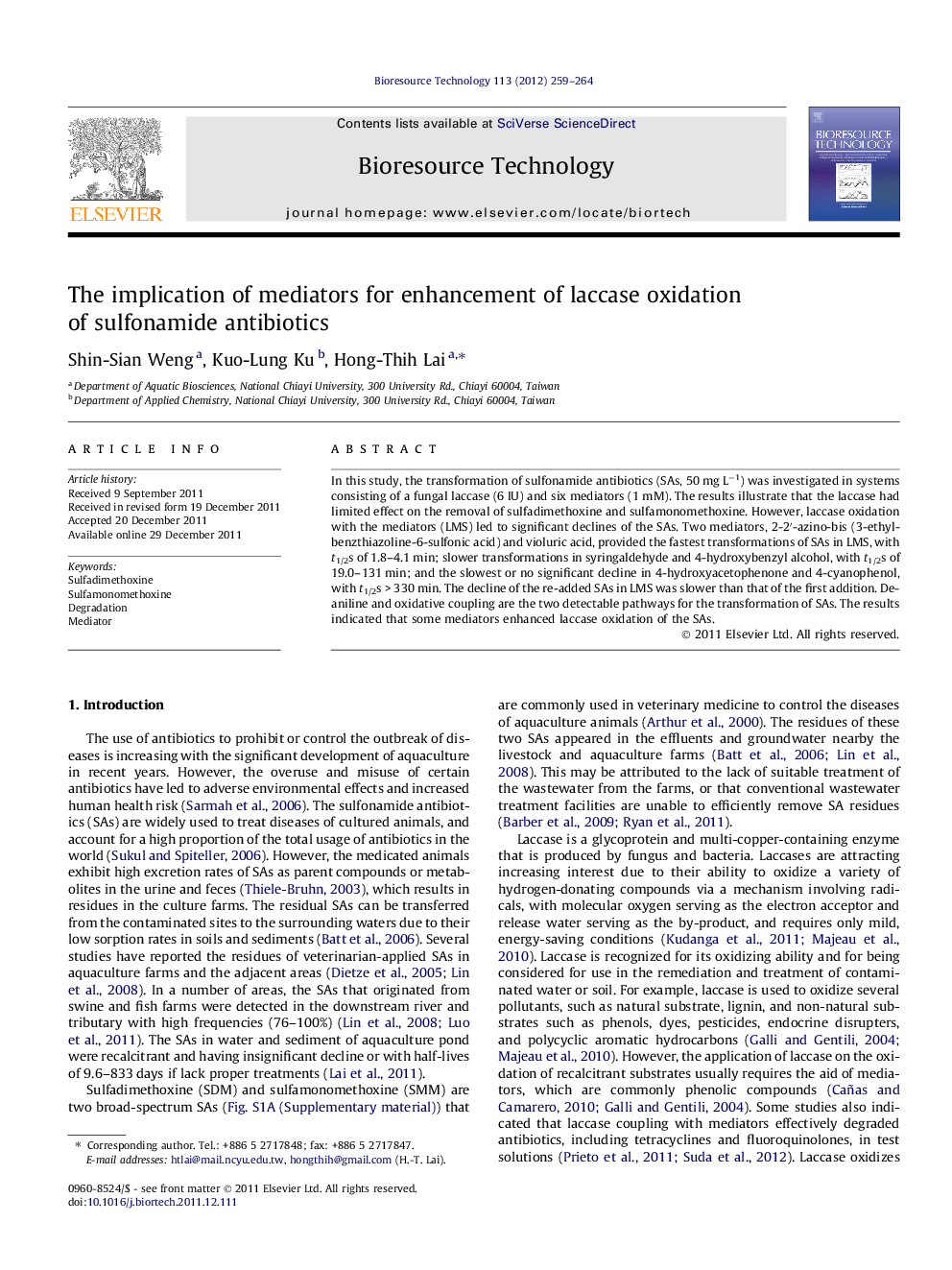| Article ID | Journal | Published Year | Pages | File Type |
|---|---|---|---|---|
| 681480 | Bioresource Technology | 2012 | 6 Pages |
In this study, the transformation of sulfonamide antibiotics (SAs, 50 mg L−1) was investigated in systems consisting of a fungal laccase (6 IU) and six mediators (1 mM). The results illustrate that the laccase had limited effect on the removal of sulfadimethoxine and sulfamonomethoxine. However, laccase oxidation with the mediators (LMS) led to significant declines of the SAs. Two mediators, 2-2′-azino-bis (3-ethylbenzthiazoline-6-sulfonic acid) and violuric acid, provided the fastest transformations of SAs in LMS, with t1/2s of 1.8–4.1 min; slower transformations in syringaldehyde and 4-hydroxybenzyl alcohol, with t1/2s of 19.0–131 min; and the slowest or no significant decline in 4-hydroxyacetophenone and 4-cyanophenol, with t1/2s > 330 min. The decline of the re-added SAs in LMS was slower than that of the first addition. De-aniline and oxidative coupling are the two detectable pathways for the transformation of SAs. The results indicated that some mediators enhanced laccase oxidation of the SAs.
► Laccase had no significant effect on removal of the sulfonamide antibiotics. ► Laccase with mediators ABTS and violuric acid transformed sulfonamide the fastest. ► Slower transformation with mediators of syringaldehyde and hydroxybenzyl alcohol. ► Re-addition of the sulfonamide antibiotics resulted in slower transformations. ► De-aniline and coupling are two detected pathways for sulfonamide transformation.
